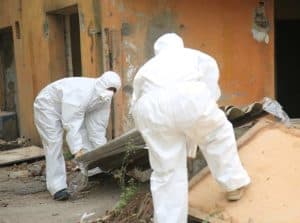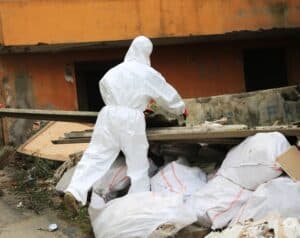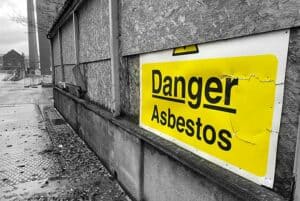What is asbestos? Important Questions Answered By Asbestos Removal Company A4 Asbestos
Asbestos can be a scary word to throw around & discuss as it has heavy connotations with illness and even death. It can be scary thinking about how you can be affected by asbestos, but the truth is it isn’t a major concern as long as you know what you’re doing, or you know who to call if you have asbestos in your home. For more information, visit our page on – Asbestos Bristol
Now banned in the UK, asbestos was an abundantly used material due to it was very useful in many applications. Asbestos is a great insulator, which made it ideal for heating pipes & home insulation. Asbestos has many unique characteristics as it can withstand a lot of things from acid, electricity to fire. Asbestos was also a very stable material so it had a remarkably long “shelf life” These qualities paired with its strength and durability were extremely sought after traits in the construction & manufacturing industry.
Asbestos took many forms when it was used commercially from woven cloth to dry powders. Asbestos was mixed with cement & mortar to strengthen bricks as it would act as a form of aggregate due to the fibrous nature of the material. Ironically, it’s these fibres that cause the greatest hazards for people that are exposed to asbestos.
What is asbestos made of?
Asbestos is actually a natural material contrary to popular belief since it seems like a very commercialised product. Asbestos was mined by the tonne, with mines being built as early as the late 19th century. The industrial revolution was a huge factor in the adoption of asbestos as it was such a useful material for many things. Due to its great insulative properties, asbestos was used for steam engines, turbines, boilers, ovens and electrical generators that all helped to power the Industrial Revolution.
Asbestos comes in three main forms, with those being white asbestos, brown asbestos & blue asbestos. Studies in the UK show that blue asbestos is the most dangerous of the three to be exposed to as the fibres are finer & sharper than other types. Because of the longer fibres, blue asbestos (Amphibole) was used for electrical insulation as well as building insulation. Blue asbestos was also woven into a fabric, which was then made into everything from oven gloves to fire cloth’s
Why is asbestos harmful to health?
Asbestos is harmful as the fibres that come from it are so small they can be ingested/inhaled into the membranes of our lungs. Due to the nature of asbestos, it’s incredibly hard for our body to break down asbestos fibres so they remain lodged in our lungs & body tissues. These fibres remain in body tissue where they can cause diseases.
Asbestos, when inhaled into the lungs, can cause major health problems like mesothelioma, asbestosis amongst other lung based cancers. Asbestos fibres will also agitate lung tissues which will cause them to scar.
How much asbestos exposure is bad for you?
The truth is that no amount of exposure is safe as there isn’t a definitive period of time that will cause health problems. Studies show that the longer exposure to asbestos, the more likely you are to develop asbestos-induced illnesses. It usually takes years of continued exposure to high levels of asbestos to cause health problems. For those in the construction industry, exposure is a huge concern especially when they’re exposed unknowingly.
Asbestos is only a problem when the fibres are airborne. This only occurs when asbestos is filed, drilled, cut or otherwise disturbed. Working/living near high levels of asbestos fibres is the only problem as asbestos as the main concern about asbestos is if it’s inhaled.
Where was asbestos used?
We have a short list below to outline a few places where you may find asbestos in your own home. With its use so widespread, it’d be surprising if you didn’t have some form of asbestos if you’re living in a home built before the 70’s.
- Soffits, Gutters & rainwater pipes
- Old Fire Blankets
- Shed, Garage & Outhouse Roofs
- Insulation Linings for Walls, Ceilings & Doors
- Storage Heater Insulation
- Roof Slates / Roof Tiles
- Floor Tiles
- Bonded Cement
If you are worried about the possible contamination of asbestos in your property, visit our page: Asbestos Bristol or contact us on 0117 259 1425
Firstly, you must identify asbestos content inherent to your building, equipment, raw materials or products. Then compare this information with the mesothelioma statistics for your industry.
Exposure to asbestos is the main risk factor for developing mesothelioma injury. The mesothelioma injury normally develops in to fully fledged mesothelioma lung cancer.
Asbestos is a family of fibrous minerals made of silicone.
Asbestos fibres were once used in many products such as thermal insulation, pipes, tiles, door gaskets, asbestos siding, sound-proofing, roofing, asbestos flooring, guttering, ceilings (especially Artex ceilings) patching compounds, fire-proof gloves and ironing board covers, brake pads, paints, crayons and even portable hair dryers.
When asbestos fibres are processed and separated it forms a microscopic dust that can be easily inhaled. If inhaled, and not excreted by the body, it can collect in the lungs and stomach and eventually lead to the development of series, life-threatening diseases.
Most industrial environments have some form of risk when it comes to asbestos exposure as there are several environments that are more likely to have asbestos risks than others.
Construction workers, or builders, who tear down or alter older buildings will encounter any of these products. Complete asbestos homes, called pre-fabs homes, were also in great demand, especially after the second world war. Many older buildings still contain asbestos as it was used abundantly in the UK.
Construction work can disturb the asbestos fibres and the toxic asbestos is released into the air. Such workers experience high levels of industrial asbestos risk. The codes of good practice for asbestos abatement should be supervised to prevent the inhalation of asbestos dust by workers.
If you are worried about the contamination of asbestos in your property, visit our page: Asbestos Disposal Bristol or contact us on 0117 259 1425




